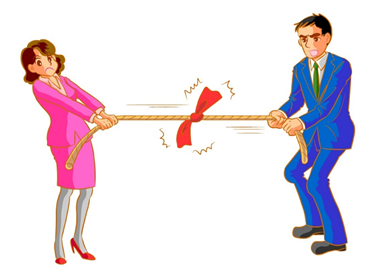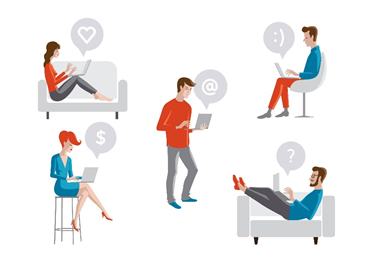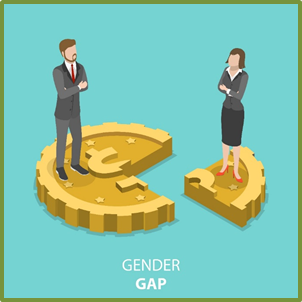
Don’t Change, be Different
There Must be an Alternative/Social Explanation for Why Women are less Assertive
The previous article regarding the Carnegie Mellon and subsequent research suggesting that when left to their own devices women tend to choose more affiliative roles in the workplace, raises a rather provocative question.
Some, with good reason, might say, “This is not a fair comparison at all; women have been socialized to be deferential, since they were little girls. Take away the fetters of tyrannical paternalism women have had to endure for centuries and watch them shine in their assertiveness even as men do.”
And certainly, had you asked any group of social scientists – left-wing, centrist, conservative – 30 years ago “What if we were rid of the patriarchal social system that has for so long subjugated women? Will egalitarian social policies in wealthy countries reduce the differences that beset men and women?” the majority would have certainly said, “of course.”
And, to some degree, that has happened.
Women have entered the workforce en masse and are participating at levels approaching or exceeding equality in many of the domains that were male majority prior to the 1960s.
 But and This is a Major But.
But and This is a Major But.
We seem to have reached the point of diminishing, or even reversing returns.
Over the last five decades or so, psychologists have aggregated great numbers of descriptions of personality traits, throwing virtually every descriptor contained in human language into the mix.
Once a relatively standard model had been agreed upon, and been deemed reliable and valid, then differences, such as those between the sexes, could be investigated.
What emerged?
First, men and women are more similar than they are different.
Even when men and women are most different – in those cultures where they differ most, and along those trait dimensions where they differ most – they are more similar than different.
However, the differences that do exist (in temperament and interest) are large enough so that they play an important role in determining or at least affecting important life outcomes, such as occupational choice.
Where Are the Largest Differences?
Men (2 out of every 3 of whom are thinkers) are less agreeable (more competitive, harsher, tough-minded, skeptical, unsympathetic, critically-minded, independent, stubborn).
This is in keeping with their proclivity, also documented cross-culturally, to manifest higher rates of violence and antisocial or criminal behavior, such that incarceration rates for men vs women approximate 10:1.
Women (2 out of every 3 of whom are feelers) are higher in negative emotion, or neuroticism.
They worry more and experience more anxiety, emotional pain, frustration, grief, self-conscious doubt and disappointment.
There are other differences as well, but they aren’t as large, excepting that of interest.
Men are comparatively more interested in things and women in people.
These two areas, temperament and interest, are the largest psychological differences between men and women yet identified.
 And These Differences Drive Occupational Choice, Particularly at the Extremes
And These Differences Drive Occupational Choice, Particularly at the Extremes
Engineers, for example, tend to be those who are not only interested in things, but who are more interested in things than most people, men or women.
It’s very important to remember that many choices are made at the extreme, and not the average.
It’s not the average more aggressive/less agreeable male that’s in prison.
In fact, if you draw a random man and a random woman from the population, and you bet that the woman is more aggressive/less agreeable, you’d be correct about 40% of the time.
But if you walked into a roomful of people everyone of whom had been selected to be the most aggressive person out of a 100, almost every one of them would be male.
So even though men and women are more the same than they are different, and the differences can matter.
What Happens if You Look at Gender Differences in Personality and Interest by Country?
Are the differences bigger in some countries and smaller in others?
Would the differences between men and women be larger or smaller in wealthier countries?
And what about egalitarian countries?
The answer: the more egalitarian and wealthier the country, the larger the differences between men and women in temperament and in interest.
In other words, women become more relationally driven, not less so.
And the relationship is not small.
The most recent study, published in Science (by researchers at Berkeley, hardly a hotbed of conservatism and patriarchy) showed a relationship between a wealth/egalitarian composite measure and sex differences that was larger than that reported in 99% of published social science studies.

These are not Small-Scale Studies
Tens of thousands of people have participated in them.
And many different groups of scientists have come to the same conclusions and published those results in very good journals.
So, differences in temperament and interest help determine occupational choice, and differences in occupational choice drives variability in such things as income.
In other words, women get paid less than men because they choose occupations aligned with their temperament but which often pay less than jobs which require aggression and a focus on things/systems.
Or when they do choose a male dominated career such as was the case with the MBA students at Carnegie Mellon, they generally have a tougher time staying competitive.
One might not like this state of affairs, and the facts can be denied, but only at the cost of throwing out social science in its entirety and a good bit of biology as well.
That is Simply not a Reasonable Solution

The best explanation, so far, for the fact of the growing differences is that there are two reasons for the differences between men and women: biology and culture.
If you minimize the cultural differences (as you do with egalitarian social policies) then you allow the biological differences to manifest themselves fully.
Social scientists have struggled to offer a cultural explanation, but thus far no such hypothesis that is the least bit credible has been forthcoming.
There are also those who insist that society simply hasn’t gone far enough in its egalitarian attempts – that even Scandinavia and The Netherlands, arguably the world’s most egalitarian societies, are still rampantly patriarchal.
But that doesn’t explain why the sex differences have grown, rather than shrunk, as those cultures have become demonstrably more equal in social policy.
So it appears that men and women, when free to make the choices they would make when confronted with egalitarian opportunities, happen to make different choices.
As a side-note and quite paradoxically, policies that maximize equality of opportunity by virtue of how women then tend to choose their careers, make equality of outcome an increasingly unlikely prospect.
The doctrine radically insisted upon by the politically correct, that sex differences are only socially constructed appear to be wrong.
Men and Women are Similar but They are Also Importantly Different
 The biological Thinker – Feeler disparity seems to hold in the face of geography, culture and government policy notwithstanding.
The biological Thinker – Feeler disparity seems to hold in the face of geography, culture and government policy notwithstanding.
The differences matter, particularly at the extremes, particularly with regard to occupational choice and its concomitants.
There are going to be more male criminals, and more male engineers, and more females with diagnoses of depression and anxiety, and more female nurses.
As Carnegie Mellon learned in its research, there are going to be differences in economic outcome associated with this variance.
Unless of course, women develop their assertive/negotiating skills even as men must learn to develop their affiliation skills.
Now that women are free to choose as they will, they, as it turns out have little interest or inclination for STEM (science, technology, engineering or mathematics) or occupations that call for competitiveness but that rather require in the main, caring and attachment
The question for our purposes of course is, “If people/women, with the freedom to choose as they will, tend to make major life choices, like occupation, based on temperament, then we must make sure that we do not change, but leverage our person and biological predisposition as it is, and rather learn how to be different.
In other words, if nature is that strong in people, learn to be what you need to be by being more of who you are (being different), not less of who you are (changing).
For more on this topic, we recommend the following | |
 | Get Unstuck, Stay Unstuck |

